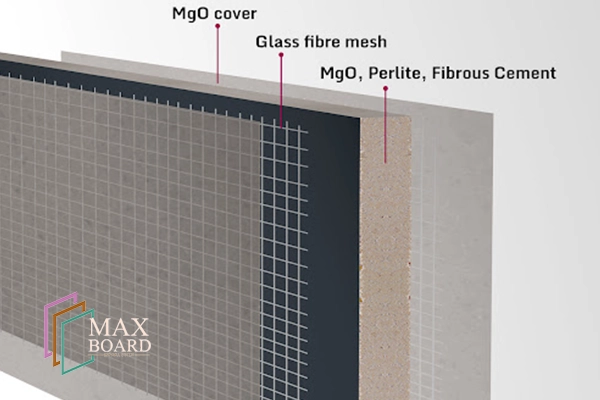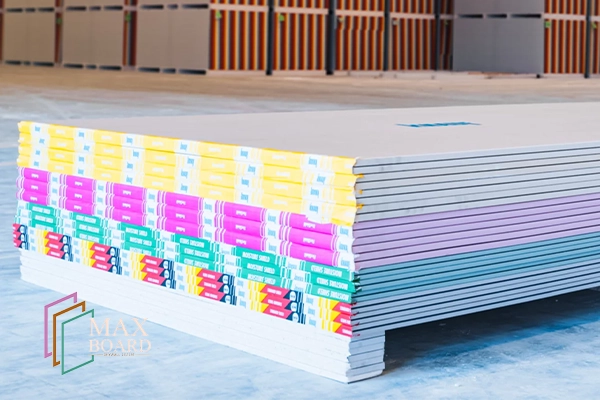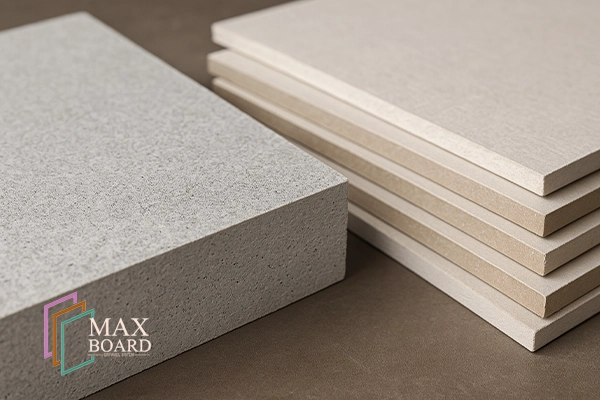Introduction
When planning any construction project in 2025, one critical decision revolves around choosing the right wall and ceiling material. Among the most popular options, MGO Panels vs Traditional Gypsum Board stand out as top contenders. Each has unique characteristics that suit different project needs. In this article, we will dive deep into the differences between MGO Panels vs Traditional Gypsum Board to help you decide which one aligns best with your construction goals.
What Are MGO Panels?
MGO panels (Magnesium Oxide Boards) are modern construction boards known for their strength, fire resistance, and eco-friendliness. Manufactured using magnesium oxide, magnesium chloride, perlite, and fiberglass mesh, these panels have become a favorite in demanding environments like hospitals and high-rise buildings.
In discussions about MGO Panels vs Traditional Gypsum Board, MGO panels consistently outperform in challenging conditions such as moisture-heavy or fire-prone areas.

Key Features of MGO Panels:
- High fire resistance (up to 4 hours)
- Outstanding moisture resistance
- Durable and impact-resistant
- Eco-friendly and free from harmful chemicals
- Resistant to mold, mildew, and pests
These properties make MGO panels ideal for areas exposed to high humidity and strict fire safety regulations.
What Is Traditional Gypsum Board?
Traditional gypsum board is a panel made from gypsum plaster pressed between two thick sheets of paper. Known widely as drywall, it has been a staple in construction for decades due to its affordability and ease of installation.
When evaluating MGO Panels vs Traditional Gypsum Board, gypsum boards are often selected for projects where budget and ease of use are primary concerns.
Key Features of Gypsum Board:
- Cost-effective
- Easy to install and finish
- Smooth surface suitable for painting and wallpapering
- Basic fire resistance
- Vulnerability to moisture and impact damage
Gypsum boards are typically used in residential projects where conditions are controlled and moisture exposure is minimal.
Key Differences Between MGO Panels and Traditional Gypsum Board
Understanding the differences between MGO Panels vs Traditional Gypsum Board is crucial for making the right choice for your project.
Fire Resistance
MGO panels outperform gypsum boards significantly in fire tests. While a standard gypsum board can resist fire for about 30–60 minutes, MGO panels can withstand fire for up to 4 hours, providing superior protection.
Moisture Resistance
In humid environments, MGO panels maintain their integrity without swelling or promoting mold growth. Gypsum boards, unless specifically treated, are susceptible to water damage and mold.
Strength and Durability
MGO panels are more impact-resistant and durable than gypsum boards. They are ideal for high-traffic areas or structures requiring long-term resilience.
Environmental Impact
MGO panels are manufactured using natural minerals and are considered eco-friendly, whereas gypsum board production requires more energy and can involve environmentally harmful processes.
Installation and Workability
Gypsum boards are lighter and easier to cut, making them preferable for quick installations. MGO panels, being denser, require special tools but offer longer-lasting performance.
Price Comparison: MGO Panels vs Traditional Gypsum Board
Despite a higher initial cost, MGO panels offer significant long-term value.
Here’s a price comparison for 2025:
| Material | Average Price per Sheet |
|---|---|
| MGO Panels | $18–$25 |
| Gypsum Boards | $10–$15 |
When comparing MGO Panels vs Traditional Gypsum Board for cost-effectiveness over time, MGO panels offer more savings through durability and reduced maintenance.
While MGO panels cost more upfront, their durability, fire resistance, and low maintenance justify the investment, especially for commercial and critical structures.

Applications of MGO Panels and Gypsum Boards
Choosing between MGO Panels vs Traditional Gypsum Board also depends on the intended application and project requirements.
Best Use Cases for MGO Panels:
- Hospitals and healthcare facilities
- Schools and educational institutions
- High-rise commercial buildings
- Exterior cladding systems
- Kitchens and bathrooms
Best Use Cases for Gypsum Boards:
- Residential interiors
- Office spaces
- Partitions and false ceilings
- Dry environment wall systems
By selecting the right material based on application, you can ensure optimal performance and longevity.
Pros and Cons of MGO Panels and Gypsum Boards
Advantages of MGO Panels:
- Superior fire and moisture resistance
- Greater structural integrity
- Environmentally friendly
- Longer service life
Disadvantages of MGO Panels:
- Higher initial purchase and installation cost
- Requires specialized cutting tools
Advantages of Gypsum Boards:
- Lower upfront costs
- Easier and faster to install
- Smooth finish for decoration
Disadvantages of Gypsum Boards:
- Poor moisture resistance
- Lower durability compared to MGO panels
External Expert Opinions
According to Wikipedia’s article on Magnesium Oxide Wallboard, MGO panels have gained global recognition due to their fireproof and waterproof characteristics, making them a strong contender against traditional building materials.
Internal Recommendation
If you want to explore more advanced building material options, check out our Max Board Product Page for a full range of high-quality MGO panels.
Which One Should You Choose?
When considering MGO Panels vs Traditional Gypsum Board, it’s essential to prioritize based on the project’s specific needs.
If you prioritize long-term durability, safety, and eco-friendliness, MGO panels are the best choice. They are particularly suited for projects where exposure to fire, moisture, or heavy use is expected.
If you need a budget-friendly, easy-to-install material for dry indoor spaces, traditional gypsum board remains a reliable solution.
Conclusion
When comparing MGO Panels vs Traditional Gypsum Board, it becomes clear that both materials have their place in modern construction. For projects demanding exceptional fire safety and moisture protection, MGO panels stand out as the superior option. However, for standard interior wall applications with budget constraints, gypsum boards continue to deliver excellent results.
FAQ
Are MGO panels better than gypsum boards in humid areas?
Yes. MGO panels resist water absorption and mold, unlike standard gypsum boards.
Are MGO panels harder to install than gypsum boards?
Slightly. They require specialized tools, but they offer much greater durability.
Are MGO panels environmentally friendly?
Absolutely. They are made from natural minerals and produce a lower environmental footprint.
What is the lifespan of MGO panels compared to gypsum boards?
MGO panels can last over 50 years, whereas gypsum boards typically last about 20–30 years under ideal conditions.



